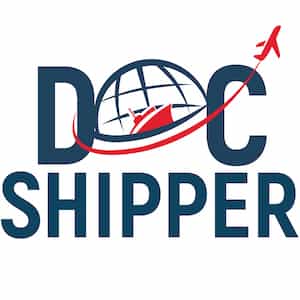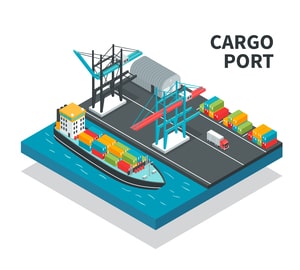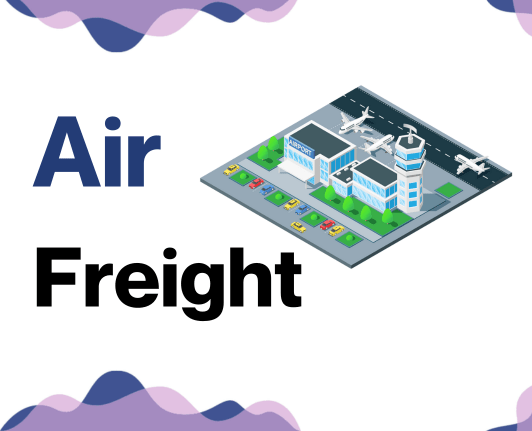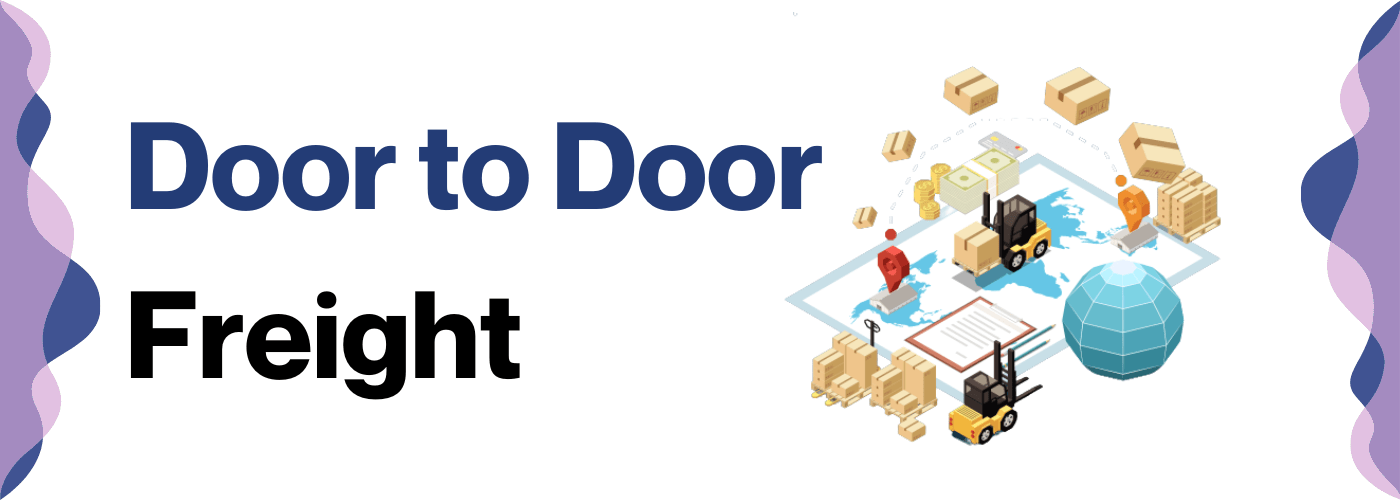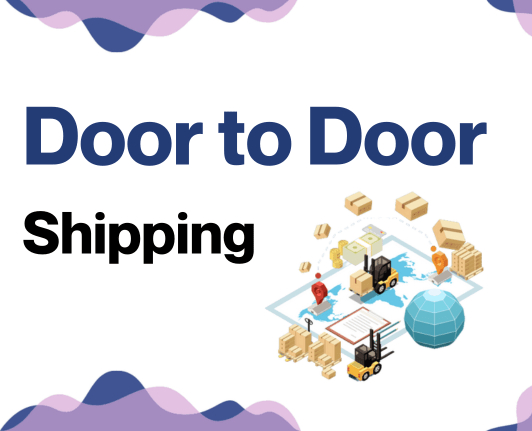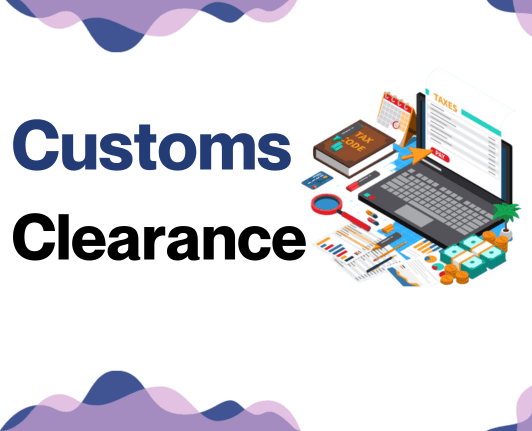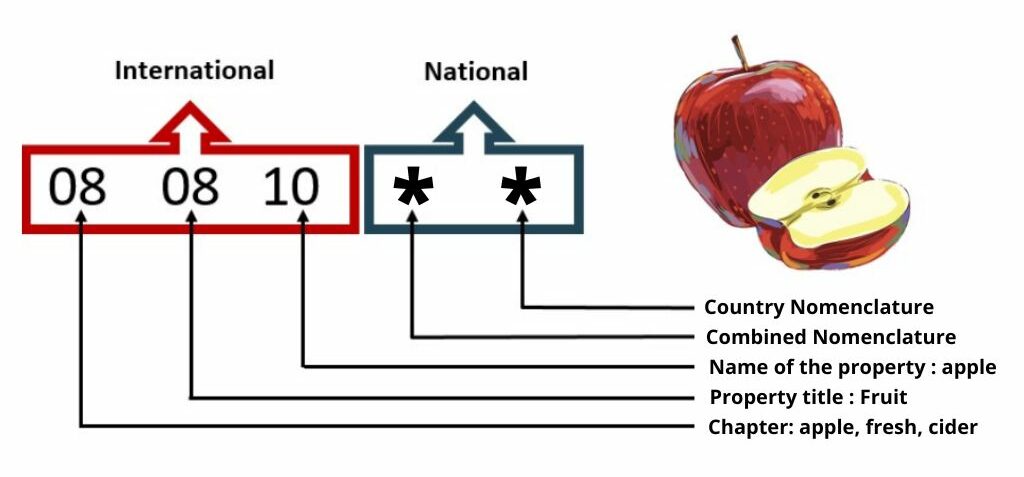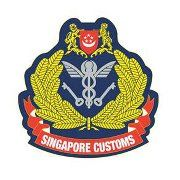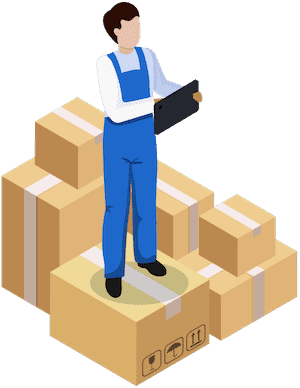Borders? What are those? Just kidding, in freight transport, they're usually pretty important! In a world where understanding freight rates, keeping track of transit times, and complying with customs regulations seems like navigating through a labyrinth, getting your goods from Malaysia to Singapore can feel intimidating.
This guide arms you with invaluable insights into different freight options such as air, ocean, road and rail freight, providing a closer look at what to expect with customs clearance process, duties, and taxes. Layered with advice catered specifically for businesses, we aim to demystify the complexities that often surround freight transport between these two vibrant economies.
If the process still feels overwhelming, let DocShipper handle it for you! As a trusted international freight forwarder, we take care of every step of the shipping process, converting potential complications into seamless ventures and immense success for your business.
Table of Contents
Which are the different modes of transportation between Malaysia and Singapore?
Just a short hop across the Strait of Malacca, Malaysia and Singapore are like next-door neighbors. Think of it like transporting your favorite couch to your friend's house just down the street. There's really no need for a big moving truck (like air or sea freight). Instead, the most efficient way is to use a small van or pickup – in our case, road freight. It's quick, cost-effective, and unlocks the door to smooth and hassle-free shipping. But, just like with moving furniture, you need a plan. That means considering factors like what you're shipping, when, and how often. Strategy matters!
Sea Freight between Malaysia and Singapore
Remark SIAM : The best option to send your personal items is undoubtedly through sea freight from Malaysia to Singapore (mainly if you have a big volume).
Shipping from Malaysia to Singapore
Due to Singapore's significant role as an international commercial and transportation center, sea freight is often transported there. In terms of traffic, Singapore port is one of the largest in the world.
If you wish to export a reasonably large volume, often greater than 3 cubic meters, sea freight offers the benefit of a lower cost (depends on many other factors). The greenest form of transportation for goods is also via sea. However, it clearly takes longer than air freight.
Benefits of ocean freight
The most significant benefit is that transporting products from Asia to all corners of the globe, namely from Asia to Malaysia, costs the least! Sea freight has a higher load bearing capacity opposed to other forms of transport, such as road transit.
You may get a guaranteed arrival date with express shipping, which is provided by numerous forwarding services and covers a wide range of shipping routes. You may acquire faster delivery times while still taking use of all the advantages of ocean shipping. Ocean travel has a lower carbon footprint than air traffic, which is good news if you care about the environment.
Negative aspects of marine freight
Ocean freight's main flaw is that it has historically taken much longer than air freight. For instance, depending on the ultimate destination, shipping goods from Malaysia to Singapore might take anywhere between 3-6 days.
The main shipping seaports in Singapore
In terms of shipping tonnage, Singapore's port is presently among the top three busiest ports in the world. Additionally, the Port of Singapore receives nearly half of the yearly supply of crude oil and one fifth of all carried containers worldwide. Singapore serves as both a destination and a transit hub for cargo from all over the globe.
How can DocShipper help?
Struggling to manage your shipping between Malaysia and Singapore? DocShipper is here to simplify the complicated. We offer comprehensive freight forwarding services, handling transport logistics, customs clearance, and more. Curious? Call our knowledgeable consultants for free advice, or contact us for a no-obligation estimate delivered within 24 hours. Your smooth shipping experience starts here.
Transit time between Malaysia and Singapore ports
The expected transit time by sea from Malaysia to Singapore is 2 to 4 days, not including pick-up and delivery at the origin and destination, respectively. Obviously, it depends on where in Malaysia you are as well as other considerations.
| Malaysia / Singapore | Port of Singapore |
| Port Of Kelang | 2-3 days |
| Port Of Tanjung Pelepas | 2-3 days |
| Port Of Penang | 3-4 days |
Please note that the transportation time takes just the freight into account. The duration of your cargo may be extended by pick-up, delivery, loading, and unloading, which are not taken into consideration.
Should I ship my goods as a groupage or a full container between Malaysia and Singapore?
The three main categories of standard container sizes are as follows. All of them may be used for both personal and professional transportation. We can observe that merchants use them most often for any kind of solid sample :
- The 40 feet HQ (High Cube, which has a capacity of 76 cubic meters)
- The 40 feet container (which has a capacity of 67 cubic meters)
- The 20 feet container (which has a capacity of 33 cubic meters)
Less than Container Load (LCL)
LCL shipment is a suitable choice when you need more merchandise (size or quantity) to fill the whole container. Additionally, it enables you to just pay for the space that you really need, which makes it perfect for little deliveries. Your goods will be stacked alongside those of another merchant who is traveling in the same direction.
The benefits of LCL shipping
If your items weigh between 2 CBM and 12/15 CBM, LCL will simply be the most affordable option to send them (cubic meters). The cost of packing and inspecting the goods will be lower.
Unlike air travel, which has several restrictions, LCL allows for the transportation of any kind of cargo.
The drawbacks of LCL
Packing, loading, and unloading in quantities equivalent to an FCL will prove to be too costly (over 13 CBM).
Our experiences in Malaysia (and Asia in general) suggest that FCL is a more practical choice.
Full Container Load (FCL)
It means that from the moment of travel to the arrival time, just one consumer occupies the whole carrier. To reduce risks and costs, the container will be closed as it leaves the company's premises until it is delivered to the customer.
If you plan to buy a lot of goods, it is a great mode of transportation to employ.
As a result, perfect user FCL will also be safer and less expensive for a bigger number, regardless of whether you fill it entirely. Undoubtedly, a full container may benefit from being less expensive than LCL starting at 15 m3.
The benefits of FCL shipping
Given that the capacity exceeds 16 CBM, it is simply the most affordable transportation option.
It is practical since you control how your items are packaged (palletization is not necessary). You will have a greater degree of security and a lower chance of damage since there will be less cargo handling (loading, interim storage, and unloading).
The drawbacks of FCL
When the volume is sufficient, you should just take this into account.
What exactly does "big enough" imply though
From 13, 14, 15, and 20 CBM, or 40% to 70% of a 20-inch container.
Specialized maritime transport between Malaysia and Singapore
The number of your items and the size of your load all affect the kind of assistance you'll require. The following details are very important to keep in mind if you are transporting certain things.
Reefer container
A cold container, often known as a reefer, is one that can keep a certain temperature constant no matter the outside temperature. It operates by transmitting its specifications to the boat's deck.
Ro-Ro
Roll-on/roll-off ships, also known as Ro-Ro ships, are designed specifically to carry wheeled goods, such as cars, trucks, vans, semi-trailers, and rail line carriages, which are powered by their own tires both inside and outside the ship.
The safest and most efficient way to handle and move larger or unique business goods. Deliveries are often transported as a single unit utilizing specialized containers from the dock to the final destination.
Bulk
Bulk supplies are dropped off right in the ship's cargo. As a result, a certification is created locally and made available for common and bulk shipments. Large-scale, freely moving freight. Bulk carriers are ships that are specifically designed to handle each kind of cargo, such as sand, aggregates, grain, and dense goods like minerals.
OGG
"Out of measure or out of standard" is what OOG Out of Gauge (OOG) freight refers to. Accessible containers and plain stack containers are the two categories into which OOG chambers may be split.
Finished goods that need to be handled and loaded using a forklift are transported in the Open Top Container.
How much does it cost to ship from Malaysia to Singapore?
The cost of shipping goods by sea varies widely based on several variables. For instance, you won't choose the same container type depending on whether you're shipping a large or little amount.
If you are shipping less than 15 cubic meters, we suggest selecting an LCL (Less than Container Load) rather than an FCL (Full Container Load). Naturally, our professionals will assist you in making the greatest decision for your requirements.
*Depending on your requirements, we may offer you packing and/or loading service, which will also affect the final cost.
We can, however, explain how this is computed, since maritime freight cost is based on the weight and amount of the products shipped.
- You should be aware that the weight/volume ratio is determined using the following equivalency rule: 1 ton Equals 1 m3
- In UP, groupage and conventional transportation are well-established. This measurement equals one of the following:
- It will always be in the carrier's favor to do the calculation, or correspond to the largest value, regardless of the unit of measurement (in volume or in mass).
Additional charges
Charges assessed by marine transport companies are in supplementary to the price agreed upon by the parties and are dependent upon the circumstances. The intricacy of the cost of shipping freight by water distinguishes it.
Bunker Adjustment Factor, or BAF
This tariff supplement reflects changes in the cost of oil. During the first oil embargo in 1973, maritime corporations started to use it due to the consumption of new ships. Since then, it has stayed on schedule.
Currency Adjustment Factor, or CAF
The dollar's value changes are reflected in this fee. Since the great bulk of maritime shipping charges is computed in US dollars, businesses use this extra as insurance against cash flows.
Terminal Handling Charge (THC)
The handling costs at the seaport of loading / unloading are represented by THC. If the cargo is conventional (also known as "non-containerized"), the price may be variable or fixed depending on the kind of container being used. During the latter scenario, the tariff is calculated per kilo, which may include additional fees (for "excessive" size or weight).
Origin Receipt Charge (ORC)
Only while leaving Chinese ports are you required to pay this extra. It assists in funding the very quick growth of Chinese ports.
Port obstruction
The mismatch between a port's operating capabilities and the number of ships is what causes port congestion. Before it can discharge its cargo, a ship must wait at one of these ports, often for many days. To make up for this "loss of income", the corporations impose a premium. The Persian Gulf and Mediterranean ports (Algeria, Libya, etc.) are the primary ones that experience congestion.
Unlock hassle-free shipping
At DocShipper, we transform cargo shipping from a hassle into a breeze for your business. Our seasoned ocean freight experts guide you towards the ideal shipping option between Malaysia and Singapore - whether that's consolidation or a full container, evaluating each indepth based on specifics like your cargo's size, timeline, and budget. The method that gives you maximum benefits is our prime choice. Ready to elevate your freight forwarding experience? Contact us for a free estimation today.
DocShipper Tip: Air freight might be the best solution for you if:
- You're pressed for time or facing a non-negotiable deadline. Air freight delivers unparalleled speed when it comes to transit times.
- Your shipment is modest in size, falling under 2 CBM. Air freight is particularly well-suited for these smaller consignments.
- Your supply chain includes destinations that are off the beaten maritime or rail paths. Air freight gives you access to a comprehensive global airport network.
Air freight between Malaysia and Singapore
When shipping goods from Malaysia to Singapore, the speed and reliability of air freight can be a game-changer, especially for small, high-value shipments. Imagine your shipments are like concert tickets - small, extremely valuable, and time-sensitive. That's when air freight shines, cutting transit time down to a neat 1-3 days.
However, it's like inviting guests for dinner without counting them first. Some businesses stumble by not considering several key factors before shipping by air. For instance, miscalculating the weight of shipments can inflate costs; it's akin to paying for a 10-person meal when only five are eating. In the upcoming sections, we'll explore common pitfalls and best practices to ensure your air freight experience is cost-effective and efficient.
Air Cargo vs Express Air Freight: How should I ship?
Choosing between Air Cargo and Express Air Freight for shipping between Malaysia and Singapore can seem daunting, especially when your business depends on it. Essentially, Air Cargo is like traveling in a shared plane/coach, while Express Air Freight is more of a private jet experience. Start decoding which option ticks more boxes for your specific shipping needs as we delve into the quirks and features of both.
Should I choose Air Cargo between Malaysia and Singapore?
As you evaluate your logistic needs between Malaysia and Singapore, air freight emerges as a reliable and cost-effective solution. Notable carriers such as Malaysia Airlines and Singapore Airlines contribute significantly to this transit mode. While air cargo offers a solid balance between cost and reliability, keep in mind it can come with slightly longer transit times due to fixed schedules. If your shipments typically exceed 100-150 kg (220-330 lbs), the air cargo option is particularly appealing for its affordability. This ensures you keep a balanced budget while achieving your delivery targets.
Should I choose Express Air Freight between Malaysia and Singapore?
Express air freight, with dedicated cargo planes carrying only your goods, offers swift delivery. If your cargo is under 1 CBM or weighs between 100-150 kg (220-330 lbs), this service might suit your speedy requirements. Services from big-name courier firms like FedEx, UPS, or DHL assure secure and rapid delivery. Whether it's important paperwork or small goods, choosing express air freight ensures your shipment gets to Singapore from Malaysia in record time.
Main international airports in Malaysia
Kuala Lumpur International Airport
Cargo Volume: KLIA processed over 726,000 tonnes of cargo in 2020.
Key Trading Partners: Notably China, Singapore, Japan, and the USA.
Strategic Importance: KLIA is the main international airport of Malaysia, located strategically in the multicultural capital, Kuala Lumpur, enabling easy access for businesses from various regions.
Notable Features: This airport hosts the Advanced Cargo Centre, a state-of-the-art cargo handling facility that ensures efficient cargo and freight management.
For Your Business: If your enterprise seeks a swift cargo handling process through a top-notch facility with a robust connection to major global markets, KLIA might be your preferred gateway.
Penang International Airport
Cargo Volume: In 2019, Penang Airport handled over 170,500 tonnes of cargo.
Key Trading Partners: Singapore, Hong Kong, Indonesia, and China.
Strategic Importance: Penang International is strategically located in the northern region of Malaysia, making it a crucial access point for businesses operating in Malaysia's northern and western regions.
Notable Features: The airport boasts a Free Industrial Zone, which fosters convenient and tax-friendly operations for businesses.
For Your Business: If your target markets are in the northern or western regions of Malaysia and you're looking for a cost-effective shipping route, consider including PIA in your logistics scheme.
Sultan Abdul Aziz Shah Airport
Cargo Volume: In 2019, it processed over 25,000 tonnes of cargo.
Key Trading Partners: Indonesia, Singapore, and Thailand.
Strategic Importance: Often known as Subang Airport, it acts as the secondary airport in bustling Kuala Lumpur and serves as an important hub for regional and domestic operations.
Notable Features: Subang SkyPark provides a modern and efficient cargo handling infrastructure.
For Your Business: If your business centers around domestic distribution within Malaysia or regional connections within Southeast Asia, Sultan Abdul Aziz Shah Airport potentially caters to your needs.
Sultan Ismail Petra Airport
Cargo Volume: SIPA processed around 3,500 tonnes of cargo in 2020.
Key Trading Partners: Singapore, Indonesia, and Thailand.
Strategic Importance: SIPA serves as the main airport in Kelantan, a state in the northeastern part of Peninsular Malaysia.
Notable Features: Not as congested as the primary airports, offering faster handling and clearance procedures for businesses.
For Your Business: If your venture favors less busy airports with prompt procedures, Sultan Ismail Petra Airport might be a handy entry point.
Sultan Ahmad Shah Airport
Cargo Volume: This airport handled almost 1,000 tonnes of cargo in 2020.
Key Trading Partners: China, Indonesia, and Singapore.
Strategic Importance: SASA is the central air gateway of the eastern region of Peninsular Malaysia.
Notable Features: SASA is located near Kuantan Port, allowing for easy multimodal transport opportunities.
For Your Business: If your enterprise finds multi-modal transport systems beneficial, and your markets lie in the eastern Malaysian, Sultan Ahmad Shah Airport could be an optimal solution.
Main international airports in Singapore
Changi International Airport
Cargo Volume: With an impressive annual cargo volume of more than 2 million metric tonnes, Changi International Airport stands as a global hub for international freight handling.
Key Trading Partners: Key trading partners from this airport include China, Australia, the US, Hong Kong, and parts of the European Union.
Strategic Importance: Being one of the busiest airports in Asia, Changi's strategic location acts as a gateway that connects Southeast Asia with the rest of the world. This allows for efficient and rapid shipping to numerous international locations.
Notable Features: Noteworthy facilities like the Air Cargo Express (ACE) hub and cool-chain handling facilities enhance handling logistics. The airport also boasts dedicated express facilities to facilitate quicker clearance for e-commerce cargo.
For Your Business: If you're looking to quickly ship goods to the Asian market or beyond, Changi's connectivity provides access to over 100 airlines flying to 380 cities. The cool-chain facilities are ideal if you're in the pharmaceutical or perishable goods industry, helping ensure product integrity throughout the journey.
How long does air freight take between Malaysia and Singapore?
The average shipping time between Malaysia and Singapore via air freight is typically within a day. However, bear in mind that transit times are not set in stone, they can fluctuate depending on the specific departure and arrival airports, size and weight of your cargo, along with the specific nature of your consignment. For a more precise estimation tailored to your unique situation, it's advisable to get in touch with a dedicated freight forwarding service such as DocShipper.
How much does it cost to ship a parcel between Malaysia and Singapore with air freight?
Air freight costs are typically quoted per kg, and shipping between Malaysia and Singapore might range from $1 to $5 per kg. However, providing an exact cost isn't possible as it's influenced by several factors such as the distance from departure and arrival airports, dimensions, weight, and nature of the goods. No worries though, our dedicated team will partner with you to get the best quote tailored to your specific needs, as we understand that every consignment is unique. Don't hesitate, contact us today, and receive your free, personalised quote within 24 hours.
What is the difference between volumetric and gross weight?
Gross weight refers to the total weight of your shipment, including the packaging and pallets. On the other hand, volumetric weight considers the amount of space your shipment occupies in the aircraft, rather than its actual weight.
Air cargo shipments use a specific calculation for volumetric weight: the dimensions of your package (length x width x height in cm) are divided by 6000. For instance, a shipment measuring 50cm x 50cm x 50cm would have a volumetric weight of 41.67 kg (or 91.93 lbs after conversion).
Express Air Freight services calculate volumetric weight in a similar fashion, but use a divisor of 5000 instead. This means the same exact shipment would have a volumetric weight of 50 kg (or 110.23 lbs).
The Gross weight on the other hand, could simply be weighing your shipment on a scale. Suppose it weighs 30 kg (or 66.14 lbs) - this is less than the calculated volumetric weights.
Why is this difference important? Freight charges are determined based on whichever of the gross or volumetric weight is higher. In our example shipment, the charges would be based on volumetric weight as it's the higher figure. Understanding these calculations ensures you're not caught off guard by the freight charges.
DocShipper tip: Door to Door might be the best solution for you if:
- You value convenience and want a seamless shipping process, as door-to-door takes care of every step from pickup to delivery.
- You prefer a single point of contact, as door-to-door services typically provide a dedicated agent to handle all aspects of the shipment.
- You want to minimize the handling of your goods, reducing the risk of damage or loss, as door-to-door minimizes transitions between different modes of transport.
Door-to-door between Malaysia and Singapore
We'll be unpacking the concept of "door-to-door" shipping next. It's a method offering complete logistical convenience by handling your goods from pick up right to the final destination. In the context of Malaysia-Singapore freight, it's a big time-saver, eliminating tricky logistical hurdles. So, let's dive in and explore the ins and outs of this streamlined shipping approach.
Overview – Door to Door
Wrestling with intricate shipping processes between Malaysia and Singapore? Door to door shipping could be your logistics lifesaver! This stress-free solution handles the complexities for you - from customs clearance to local delivery. It's not without drawbacks; it might cost you a bit more, but keep in mind, convenience is king. This seamless approach speaks volumes, as it's the top choice for DocShipper's clients. Discover how door-to-door shipping can turn a logistical labyrinth into a smooth journey. Jump in, get clear, practical insights, and see if it's the right fit for you. Enjoy the ride without bearing the burden of freight forwarding!
Why should I use a Door-to-door service between Malaysia and Singapore?
Picture this: one moment your goods are still at your warehouse in Kuala Lumpur, the next, they've magically appeared at the buyer's doorstep in Singapore! Hold up – it's not magic, it's a Door to Door service! Here are five spell-binding reasons why it might become your logistics best buddy.
1. Ease Your Stress: Door to Door service lifts the hefty logistics weight off your shoulders. From picking up your goods, delivering them directly to the buyer's doorstep, to handling all the customs paperwork, the process is stress-free.
2. Time is Money: In a hurry? Door to Door ensures timely delivery; perfect if you're racing against time to fulfill an urgent order.
3. Specialized Care: Have delicate or complex cargo? This service prides itself on professional handling, giving your goods the VIP treatment they deserve.
4. Complete Journey Solution: This service isn't a one-trick pony, it covers the whole nine yards - trucking, sea freight, customs - you name it. It's not just about getting there, it's about enjoying the ride.
5. Pure Convenience: No need to juggle between multiple logistics partners, Door-to-Door service is your all-in-one, convenient solution for end-to-end shipping.
So, why choose Door to Door service between Malaysia and Singapore? Well, it's really about gifting yourself the luxury of peace of mind in an otherwise chaotic world of shipping!
DocShipper – Door to Door specialist between Malaysia and Singapore
Experience seamless, stress-free door-to-door shipping of goods between Malaysia and Singapore with DocShipper. Our expert team proficiently arranges packing, transport, customs clearance, and opts for the best shipping methods, making your international freight a breeze. With a dedicated Account Executive at your disposal, even the finer details are taken care of. No need to stress - simply contact us for a swift, free estimate in less than 24 hours, or consult with our professionals free of charge. Your shipping solution is just a call away.
Customs clearance in Singapore for goods imported from Malaysia
Customs clearance is a critical stage in importing goods from Malaysia to Singapore—often complex and fraught with potential unforeseen costs. It's easy to underestimate the intricacies of customs duties, taxes, quotas, and licenses. Misunderstandings or omissions can result in your goods languishing in limbo at the border. We'll delve deeper into these topics in the following sections. It's comforting to know that professional assistance is available: DocShipper is ready to streamline your customs processes, allowing worry-free transportation of any kind of goods worldwide. Providing the goods' origins, their value, and the respective HS code, we can help you budget your project effectively. So, don't hesitate—reach out for the guidance you need.
How to calculate duties & taxes when importing from Malaysia to Singapore?
Estimating duties and taxes in the global shipping process can feel like a puzzle with many intricate pieces. But fear not, the formula isn't as elusive as it seems. To figure out those numbers, you'll need five key elements: the country of origin, the HS Code, the Customs Value, the Applicable Tariff Rate, and any additional taxes or fees related to your particular products. Now, this puzzle begins with identifying the country where your goods were created or produced, a crucial aspect in the calculation of any customs duties. Piece by piece, let's make sense of these parameters and unscramble the world of import charges from Malaysia to Singapore.
Step 1 - Identify the Country of Origin
Diving right into it, knowing your product's Country of Origin (CO) is the compass guiding your shipping journey. Here's the breakdown:
1. Determines Duties: Depending on your CO, the import customs and duties vary as per international trade agreements - like Malaysia's Free Trade Agreement with Singapore.
2. Compliance with Import Laws: Some goods might not be allowed in Singapore from specific countries - it's crucial to know this upfront!
3. Trade Agreements Impact: Because of the ASEAN Trade in Goods Agreement (ATIGA), shipping between Malaysia and Singapore could result in lower/no customs duties, a boon for your costs.
4. Authenticating Goods' Source: Verifying CO helps prevent counterfeit or illicit goods from entering the supply chain.
5. Impact on Tariff Code: CO empowers you to pick the accurate Harmonized System(HS) code, which then dictates the exact duties your product attracts.
Having your CO down pat is like having your passport handy at customs. You're secure, dutiful, and less likely to encounter unanticipated fees or delays. Say goodbye to shipping hiccups!
Step 2 - Find the HS Code of your product
The Harmonized System (HS) Code is a standardized numerical method of classifying traded products, developed and maintained by the World Customs Organization (WCO). It's universally applied, offering principles that ensure goods are consistently declared across the globe, and it's of crucial importance in shipping and international commerce. The HS Code is used to define the duty rates for imported items, to gather statistics and regulate the trade of restricted goods.
In general, the quickest path to find the HS code of your product is simply to ask your supplier. As experts in their products, they would be well-informed about the products they're importing and the associated regulations.
But, if this route is not accessible, here's a simple step-by-step method to find it yourself.
1. Use a Harmonized Tariff Schedule lookup tool.
2. Enter the specific product name you're searching for in the tool's search bar.
3. Examine the Headings/Subheading column of your search result. That's where your HS code will be located.
However, a word of caution: accuracy is essential when selecting an HS code. Mistakes in coding can result in delays in shipping, and even potential fines for misdeclaration.
Here's an infographic showing you how to read an HS code:
Step 3 - Calculate the Customs Value
You might wonder, What's this 'customs value'? How does it differ from the product value? The customs value is essentially the true economic value of your goods when they cross the border. Unlike the product value, it includes not just the price of goods, but also the cost for cross-border transportation and insurance. In practice, you calculate the customs value using the CIF (Cost, Insurance, Freight) model. Let's take a hypothetical scenario: Your product costs $100 (product value), shipping charges are $20, and insurance is $10. Your customs value here becomes $130 ($100 + $20 + $10). This is the figure Singapore Customs will use to assess duty or GST, not the standalone product value. Understanding this can help you anticipate the expenses accurately and avoid unpleasant surprises.
Step 4 - Figure out the applicable Import Tariff
An import tariff is a tax levied by a government on goods coming from another country. It's primarily used to protect domestic businesses and industries by making imported goods more expensive.
Singapore follows the ASEAN Harmonised Tariff Nomenclature (AHTN) for tariffs, a globally accepted classification method to categorize traded products. You can consult the Singapore Customs website to check the HS code and corresponding tariff for your product.
For instance, consider an electronic device with HS code 8517.12.00 – Mobile Phones. Here's how you can calculate the import duties:
1. Find the HS code from your invoice or from the manufacturer.
2. Go to Singapore Customs website and input the HS code.
3. Identify the tariff rate for Mobile Phones, suppose it is at 5%.
Let's say your CIF (Cost, Insurance, and Freight) is $10,000. Then, your import tax would be calculated as follows:
Import Duties = (Tariff Rate / 100) x CIF Cost
= (5 / 100) x $10,000
= $500
So, from Malaysia to Singapore, for an electronic device categorized under HS 8517.12.00, you'd need to pay $500 as import duty. Remember, accuracy in identifying the HS code and calculating duties can streamline the process and prevent costly mistakes.
Step 5 - Consider other Import Duties and Taxes
Beyond Standard Tariffs, goods may be subjected to other charges upon entering Singapore from Malaysia. One such tax is the Excise Duty, applied to certain goods like tobacco or alcohol. For instance, if you're importing whiskey, you may face an Excise Duty - just remember, these are only hypothetical examples, the actual rates could differ!
Next, there are the Anti-Dumping Taxes, designed to protect Singapore's domestic industries from foreign products sold below fair market value. Let's say you are importing cheap steel from Malaysia; pre-emptive Anti-Dumping measures might apply.
Lastly, there's the Value-Added Tax (VAT), a type of consumption tax placed on a product whenever value is added at each stage of the supply chain. This is critical to understand because potentially, every business in the supply chain will need to deal with the VAT. To calculate your VAT, multiply the customs value of the goods by the current rate (e.g., 7% for 2022— but check for updates). So, if the goods cost $10,000, your VAT should be about $700.
Remember that the nature of the product and its country of origin play a role in determining these fees, ensuring fair trade and the well-being of Singapore's economy. Be sure to consult with a local expert or use a reputable online customs duty calculator to provide accurate estimates for your specific case.
Step 6 - Calculate the Customs Duties
Figuring out customs duties isn't rocket science, especially when shipping goods from Malaysia to Singapore. Let's quickly walk through the calculation method.
The customs duty equation is straightforward: Customs Duty = Customs Value Duty Rate. This easy formula means you multiply the customs value of your goods by the specific duty rate outlined by Singapore for your product type.
For instance, you're shipping machinery worth $5000 with a duty rate of 5%. Here, your Customs Duty would be $250 (5000 5/100). Notice that no VAT is included here.
However, if VAT comes into play, you need to calculate it too. Let's say the VAT rate is 7%. So, you'd calculate the total Customs Value including VAT as follows: Total Customs Value = Customs Value + VAT + Freight & Insurance costs. Let's consider your Customs Value is $7000 including freight and insurance, the VAT would be $490 (7000 7/100).
In the scenario where Customs Duties, VAT, and anti-dumping taxes are applicable, add these additional costs to the Customs Value. For instance, if your customs value is $10,000 and the anti-dumping tax is $500, your total Customs Value will be $10,500. Also, let's throw in an Excise Duty of $200, bringing your total costs to $10,700.
Tired yet? Don't fret. DocShipper has got you covered! Our expert teams manage every step of customs clearance, ensuring you're not overcharged and everything is processed smoothly. Let our expertise save you time and money. Contact us today for a free quote in less than 24 hours. We're there for you, anytime, anywhere around the globe.
Does DocShipper charge customs fees?
DocShipper, functioning as a customs broker in Malaysia and Singapore, handles your shipping needs responsibly. While we do charge for customs clearance services, remember that customs duties and taxes are separate; these go directly to the government. But no worries, we've got transparency covered! You'll receive the original customs documents as proof that you've only paid the exact official charges, zero hidden costs. It's like dining at a restaurant: you pay us for the service, but taxes go straight to the government's pocket!
Contact Details for Customs Authorities
Malaysia Customs
Official name: Royal Malaysian Customs Department
Official website: https://www.customs.gov.my/en
Required documents for customs clearance
Untangling customs clearance jargon is tough, right? Our guide will break down the meaning and use of Bill of Lading, Packing List, Certificate of Origin, and Documents of Conformity (CE standard), asserting their crucial role in seamless international shipping.
Bill of Lading
Navigating freight transportation from Malaysia to Singapore? Don't overlook the crucial Bill of Lading. A key to your shipment's safe passage, it marks the transfer of ownership, ensuring a smooth transaction. Opt for an electronic ('telex') release for a hassle-free experience. It expedites the documentation process and proves a perfect ally against the annoyances of paper-pileup. Transporting by air? The Air Waybill (AWB) is your equivalent document. It's just as significant but tailored to air cargo. Remember, cargo clearance seems daunting, but the right paperwork is like a magic key, unlocking a smooth, no-surprise transit for your goods to their destination. So, keep your Bill of Lading or AWB handy - they're more than documents; they're your ticket to trade.
Packing List
Shipping goods between Malaysia and Singapore and not sure where to start? Your packing list is crucial. This rundown of your shipment's contents ensures accuracy and transparency in international trade. If you're shipping electronics, it's not enough to say just that. Details matter, whether it's 100 units of Model X phones or 500 pieces of Widget Z. This clarity helps customs officers understand exactly what's crossing borders, making clearance faster and reducing your chances of inspection delays. Mistakes or vague descriptions can lead to severe hold-ups at the port, be it Tanjung Pelepas or Pasir Panjang. Whether you're using sea or air freight, customs requires these insights to levy the correct duties. Play your part, get it right!
Commercial Invoice
Ever shipped goods from Malaysia to Singapore and stalled at the spot of Commercial invoices? This piece of document can make or break your customs clearance process. Amidst details like buyer and seller info and description of goods, ensure you tally the Harmonized System (HS) Codes too. A mismatch with this 6-digit code on the Bill of Lading can lead to customs delays. Streamlining these documents not only guarantees a smooth journey past Singaporean customs but also expedites your freight movements.
A stellar tip: Be accurate and consistent with your product's value across all documents; random 'value spikes' might raise red flags, unraveling your customs clearance plans. Thus, aligning invoice details with other shipping documents can be a game-changer. Remember, a spotless Commercial Invoice paves the path for an effortless cross-border shipment.
Certificate of Origin
The Certificate of Origin (CoO) is your passport for your goods when shipping from Malaysia to Singapore. Consider it the ID showing where your product was born. An accurate CoO is essential as it affects tariff rates and can potentially score you preferential duty rates under the Preferential Trade Agreement between both nations. For example, if you're exporting 'Made in Malaysia' electronics, including the specific phrase in your CoO could significantly reduce your customs duties. Skipping or inaccurately filling out this document can lead to delays or hefty fines. Hence, it's critical not merely to secure a CoO but to ensure it truthfully represents your product's nation of manufacture. Always remember, the CoO is a non-negotiable requirement that carries both risk and potential rewards. Avoid complications, save money, and keep your goods moving smoothly.
Get Started with DocShipper
Sailing through customs can often feel like navigating uncharted waters. That's where we come in. At DocShipper, we master every step of the customs clearance journey between Malaysia and Singapore to ensure your goods move smoothly, and without surprise costs. Get in touch with our expert team for a free quote within 24 hours. Don’t let complex customs hold back your business. Let our experience guide you.
Prohibited and Restricted items when importing into Singapore
Ever felt flummoxed by the mystery of what you're allowed to bring into Singapore? It's not as straightforward as you might wish. Let's unravel the complexities together and help you avoid any unforeseen inconvenience or penalties.
Restricted Products
- Pharmaceutical products and medicine: You have to apply for a Certificate of Product Registration from the Health Sciences Authority - HSA. This will attest to your product's quality, safety, and efficacy.
- Organic foods: You'll need a certification of Inspection by Control Union in Singapore.
- Firearms and explosives: It is critical to get a Dealer's License from the Singapore Police Force before you ship these types of goods.
- Radioactive materials: These require authorization from the National Environment Agency. Apply with them before the freight operation.
- Plants and plant products: Grab a Phytosanitary certificate from the Agri-Food & Veterinary Authority for each different type of plant product.
- Animals and animal products: You'll have to obtain an Animal & Birds and their product license from the Agri-Food & Veterinary Authority;
- Precious metals and stones: Always have approval from the Ministry of Law in your pocket for shipping these.
- Alcoholic beverages and tobacco: If you want to ship alcohol or tobacco products, apply for a Customs Duty-paid Goods Permit from Singapore Customs.
- Telecommunications equipment: You have to get a Dealer's License from the Infocomm Media Development Authority before importing these.
- Motor vehicles: Importing cars, bikes, or any other motor vehicles requires you to contact the Land Transport Authority - get a permit from them, and you’re good to go.
Prohibited products
- Chewing gum (except dental and nicotine gum with a medical certificate)
- Firecrackers
- Cigarette lighters in the shape of firearms
- E-Cigarettes and refills
- Shisha tobacco
- Controlled drugs and psychotropic substances (without proper authorization)
- Endangered species of wildlife and their parts
- Obscene and pornographic materials
- Reproductions of copyright publications, software, video tapes, video compact discs, laser discs, records, or cassettes
- Telecommunication and radio communication equipment deemed as 'controlled' by the Singapore authorities
- Certain meat and fish products from specific countries due to health reasons and regulations.
Are there any trade agreements between Malaysia and Singapore
Yes, Malaysia and Singapore share trade agreements that can impact your shipping activities. They are part of the ASEAN Free Trade Area (AFTA) and several Economic Partnership Agreements (EPAs), facilitating reduced tariffs and smoother processes. Recognizing the strategic significance of efficient goods transportation, these countries are continually advancing their joint infrastructural projects, like the Johor Bahru-Singapore Rapid Transit System. Capitalizing on these existing frameworks could significantly optimize your shipping operations. Stay tuned for promising updates on further discussions!
Malaysia - Singapore trade and economic relationship
Singapore and Malaysia share a deep-rooted trade and economic relationship that has evolved substantially since their separation in 1965. As neighboring countries, they heavily invest in each other's economies, with Malaysia consistently ranking among the top investors in Singapore, and vice versa. Here, crucial sectors include electronics, petroleum products, and chemicals.
In 2022, both countries traded goods worth $89.7 billion, highlighting their robust economic bond. Despite global challenges, Malaysian investments in Singapore reached a really high number, marking a significant milestone. Similarly, Singapore ranks as one of the top source countries of foreign direct investment in Malaysia, contributing significantly to economic growth in industries like manufacturing and services.
Through their intertwined histories and economies, these two nations exemplify how geographic neighbors can foster lucrative, multidimensional trade relationships. These dynamics have made them pillars of prosperity in the ASEAN region.
Your Next Step with DocShipper
Moving goods between Malaysia and Singapore can be complex and time-consuming. Don't let transportation and customs obstacles disrupt your business. Let DocShipper's team of experts handle the logistics, ensuring swift and secure delivery using the most cost-effective methods. Ready to simplify the way you ship? Contact us today and get your goods moving without a hitch.
Additional logistics services
Harness the power of holistic logistics management with DocShipper. From warehousing to packaging, inventory management, and beyond - we manage your supply chain end-to-end, so you can focus on thriving your business.
Warehousing and storage
Storing your goods needn't be a headache. Picture finding a dependable warehouse in Malaysia; it's hot, and your temperature-sensitive items are at risk. Fret not. Our warehousing solutions ensure optimal conditions to protect your commodities. No more sleepless nights worrying about the well-being of your goods. Get the full scoop on how we do it at our Warehousing page.
Packaging and repackaging
Shipping goods from Malaysia to Singapore? Correct packaging is paramount. Whether it's delicate glassware or rugged machinery, our team ensures all your items are adequately safeguarded for transit. Our dependable agents manage repackaging tasks, too, adjusting to the specific needs of various products for a seamless shipping experience. Learn more on our dedicated page: Freight packaging.
Cargo insurance
Protect your consignments not just against fire, but a plethora of risks with our Cargo Insurance. It's broader than your traditional fire insurance, covering theft, damage, or loss in transit. Think about those rough sea swells or bumpy road journeys – our insurance has got you covered. Spare your business unnecessary financial losses. More info on our dedicated page: Cargo Insurance.
Supplier Management (Sourcing)
If manufacturing in Asia or East Europe feels like solving a complex puzzle, DocShipper is your missing piece! From finding reliable suppliers to handling the entire procurement process, we've got you covered. Say goodbye to language barriers with our guidance, and hello to seamless sourcing. Curious? Discover how we can address your specific challenges on our Sourcing services page.
Personal effects shipping
Perfect for your bulky artwork or grandma's delicate china set, our Personal Effects Shipping ensures your prized possessions move between Malaysia and Singapore with utmost care. Think your large L-shaped sofa seems impossible to relocate? We use flexible strategies to make it happen effortlessly. Explore all specifics of safely shifting your world at our dedicated page: Shipping Personal Belongings.
Quality Control
Ensuring your products are up-to-par before shipping from Malaysia to Singapore is crucial. Quality inspections catch errors in manufacturing or customization, saving your brand from costly recalls. Imagine missing a batch of defective electronic components - nightmare! With our Quality Control service, that won't happen. Your business reputation stays pristine, and your customers stay happy. More info on our dedicated page: Quality Inspection.
Product compliance services
Shipping products? It's crucial to ensure they meet all regulatory standards. Our product compliance services include conducting rigorous tests in our labs to obtain the necessary certification for your goods. Take a common toy, for example. It's not just about finding the right box size - safety regulations and materials testing are part of the journey too. Visit our dedicated page: Product Compliance Services for more information.
FAQ |Freight Forwarder in Malaysia and Singapore
What is the necessary paperwork during shipping between Malaysia and Singapore?
To arrange a shipment from Malaysia to Singapore, the minimum paperwork you'll need includes the Bill of Lading for sea freight or an Air Way Bill if you're going by air. We, at DocShipper, will help you manage these. Simultaneously, you'd need to furnish us with a packing list and the commercial invoice related to your shipment. Bear in mind, depending upon the nature of your goods, other documents such as Material Safety Data Sheets (MSDS) or specific certificates may be required. We're here to ensure a hassle-free shipment process for you, ensuring compliance with relevant regulations.
Do I need a customs broker while importing in Singapore?
While it's not strictly necessary to use a customs broker when importing goods into Singapore, we strongly advise doing so. The customs clearance process can be complicated, requiring attention to specific procedures and the provision of mandatory documents. As your trusted freight forwarder, we at DocShipper often represent your cargo at customs for the majority of shipments. By taking advantage of our extensive experience and understanding of international trade laws, you can rest easy knowing the heavy lifting is handled and your shipment will clear customs smoothly.
Can air freight be cheaper than sea freight between Malaysia and Singapore?
Whether air freight proves cheaper than sea freight between Malaysia and Singapore largely depends on factors such as the route, weight, and volume of your cargo. Usually, if you're shipping cargo less than 1.5 Cubic Meters or 300 kg (660 lbs), air freight becomes a feasible option. At DocShipper, we are committed to providing cost-effective solutions. You'll have a dedicated account executive assigned to you, offering the most competitive option that suits your specific needs.
Do I need to pay insurance while importing my goods to Singapore?
While transporting goods to Singapore, insurance isn't compulsory. However, at DocShipper, we strongly advise you to opt for it, as unforeseen incidents can occur at any stage, causing your cargo to be lost, stolen, or damaged. Ensuring you have a suitable insurance policy can significantly minimize your financial risk if such circumstances arise.
What is the cheapest way to ship to Singapore from Malaysia?
For shipping goods from Malaysia to Singapore, the cheapest and most efficient option is typically road freight. Thanks to the proximity of both countries and well-established road networks, it offers a balance between cost-effectiveness and timely delivery. However, we recommend understanding your specific needs, like cargo size, type, and urgency to decide the best mode. Please consult with our transport experts for a customized solution.
EXW, FOB, or CIF?
Choosing between EXW, FOB, or CIF depends largely on your relationship with your supplier. We note that suppliers often are not logistics professionals. Therefore, it might be beneficial to enlist a logistics specialist like us, DocShipper, to handle the international freight process and destination procedures. Typically, suppliers sell under EXW (at the door of their factory) or FOB (inclusive of local charges up to the terminal of origin). But don't worry – at DocShipper, we strive to make it easier for you by offering a comprehensive door-to-door service to smooth out your shipping process.
Goods have arrived at my port in Singapore, how do I get them delivered to the final destination?
To get your goods from the port to their final destination in Singapore, you can engage the services of a custom broker or a freight forwarder for clearance at the terminal and delivery, if you've opted for CIF/CFR incoterms. Alternatively, we also offer DAP incoterms, where we'll manage the entire process. Please confer with your DocShipper account executive for clarification and matching services to your needs.
Does your quotation include all cost?
Indeed, we at DocShipper ensure full transparency in our costs. Our quotation encompasses all shipping expenses, leaving no room for hidden fees. The only costs not on our quotation are the duties and taxes at the destination country. Don't worry – if you need them estimated, your dedicated account executive is at your service. Thus, no more unpleasant surprises!
